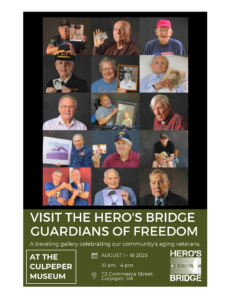 Charlie Williams celebrated his 98th birthday on May 1 and spent the time remembering his military service seven decades earlier.
Charlie Williams celebrated his 98th birthday on May 1 and spent the time remembering his military service seven decades earlier.
Born in 1925 in Tunnelton, West Virginia, he was the middle son of five boys. His father worked on the railroad Tunnelton Cooperative Coal Company.
Charlie turned 18 in May 1943. At the end of July, he received his draft notice and was officially drafted on August 19. When asked about the draft, he stated simply, “I didn’t have a choice.” He also didn’t have a choice about which branch he served in. His four brothers went into the Army, Charlie got Navy. “They just went down the line, Army, Navy, Air Force… I got Navy.”
With his Naval assignment, Charlie, whose hometown had fewer than 600 residents at the time, was suddenly given a pass to see the Pacific Ocean theatre of World War II.
His tour began in the Great Lakes before he went to Biloxi, MS for gunnery school and then to Brooklyn, N.Y to the Armed Guard Center where he was trained to be a gunner on merchant ships.
 Three Tours of Duty
Three Tours of Duty
He boarded the S.S. Franklin K. Lane in Baltimore, MD on December 17, 1943, for his first tour and was permitted to depart the ship during port calls.
His first tour took him to Brazil, Chile, Australia, and New Guinea, returning to California on August 28, 1944. From there, he took a 15-day cross-country train trip to report back in Brooklyn, New York.
His second tour began less than one month later on September 23, 1944, when he boarded the S.S. Benjamin H. Grierson in Brooklyn, N.Y., and traveled south to Panama, New Caledonia, New Guinea, and the Philippine Islands.
From January 3 -13, 1945, the ship engaged in naval combat during the Lingayen Gulf invasion that resulted in an Allied victory.
Following the invasion, he was transferred to the S.S. Blackwater tanker on April 14, 1945, in the Philippines and continued his tour for fuel to Balboa, Panama City, Canal Zone, West Indies, Nicaragua ending in Balboa, Canal Zone on September 1, 1945. He was then transferred to the John Armstrong as a passenger to New York, N.Y., a trip that took him 13 days.
His final tour was aboard the S.S. Jean, which he boarded on Halloween 1945 in Baltimore, MD. This brief tour took him to Puerto Rico and back to Baltimore, MD. on December 20, 1945.
Charlie was discharged on March 13, 1946.
When Charlie’s service was over, he left the military behind.
Life Following Military Service
He took advantage of his veteran benefits and went to college using the GI Bill where he earned a degree in education. He then accepted a basketball and baseball coach job at Stafford High School. Three years later he accepted the principal position of the school where he stayed for 34 years. When asked if his military service made him a stern principal, he responded, “I’m not sure, but I did use the paddle.” A common practice at the time.
He used a VA loan to help buy his first house. However, it was under the condition that he was earning at least $4,200 annually. At the time, his position as principal paid only $3,000, so he accepted more coaching jobs to get his salary to the required amount. With the loan secured, he purchased a house where he and his first wife raised their two sons.
Forty years later Charlie moved to Florida in 1986 with his second wife. When she passed away last year, he moved to Warrenton where he now lives with his son and daughter-in-law.
Charlie is a man of few words, as are all the Williams men, according to his daughter-in-law Gloria. That is however until Charlie’s older brother, Franny, watched a TV show about a holocaust denier. “Franny, never spoke of his service when he came home,” said Charlie. “Until he saw the holocaust-denier purporting that it never happened.
Franny had been at the liberation of the Dachau concentration camp; he saw the condition of the inmates. “That’s the most emotion we ever saw from him about his service,” said Charlie.
Charlie doesn’t have very much to add about his years of service. His days were four hours on and eight hours off, seven days a week. He had jungle training, discharged naval ships at night, engaged in invasions, and fought off anti-aircraft attacks all between the ages of 18 and 21.
Perhaps most remarkable from his time in service is that his parents welcomed each of their sons home following their war commitment. One sustained several physical injuries, and each carried with them the unseen trauma of their service days, but when the war was over, each Williams’ boy was granted the gift of the rest of his life.
 Visit Charlie, and all of the Guardians of Freedom portraits at the Culpeper Museum, located at 113 Commerce Street, Culpeper, VA.
Visit Charlie, and all of the Guardians of Freedom portraits at the Culpeper Museum, located at 113 Commerce Street, Culpeper, VA.
The portraits will be displayed now through August 18.
The museum is a Blue Star Museum and has free admission for veterans and active military families through Labor Day.
Hero’s Bridge Honor Guard program manages the Guardians of Freedom portrait collection. This collection celebrates our local veterans and shares their stories.

